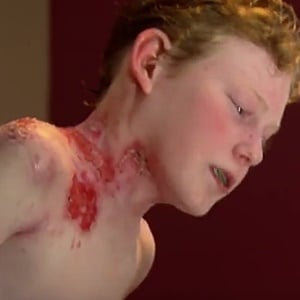
Epidermolysis Bullosa (EB) is a group of rare genetic skin conditions which causes blisters to appear on the skin as a result of heat, friction and/or minor injury.
People who are diagnosed with EB have extremely fragile skin as they experience recurrent blisters which aren't only limited to the outer skin area. In severe cases the blisters can also occur on the inside of the body - in areas such as the mouth and intestines.
Jonathan Pitre lives with EB
14 year old Jonathan Pitre, who was born with EB, has 95% of his body covered in blisters and doctors have predicted a total lifespan of 25 years for him.
The brave teen, who has already lived half his anticipated life, says that everything is a challenge when you have EB. "From eating, walking to getting dressed" is difficult he explains. Despite living in extreme pain, he has a positive outlook on life and shares his story in a YouTube video to create awareness and to offer hope to others living with EB.
Take a look at how Jonathan lives with EB
How EB works
According to DEBRA International, a worldwide alliance of Epidermolysis Bullosa patient support groups, the skin consists of an inner and outer layer. There are 'anchors' between these layers which allow the layers of the skin to move together. However, people with EB, do not have these 'anchors', making it easy for friction to occur between the skin. This means that any pressure on or rubbing of the skin will ultimately result in blisters.
Read: Anatomy of the skin
The NHS in the UK explains that there are four major types of EB, depending on where in the various layers of skin the blistering takes place:
1. EB simplex: blisters form in the upper layer of the skin,
2. Junctional EB: blisters form between the epidermis (the outer layer of cells covering the skin) and the dermis (the thick layer of living tissue below the epidermis that forms the true skin),
3. Dystrophic EB: blisters form below the basement membrane zone in the upper part of the dermis,
4. Kindler syndrome: this refers to mixed levels of blistering
An EB sufferer's blisters can be compared to the skin damage of third-degree burns.
With most cases of EB being inherited, the first signs and symptoms of the disease can be seen as early as infancy or in early childhood.
DEBRA lists the following as typical signs of EB:
- painful blisters or chronic open wounds on the skin
- blisters or constriction in the mouth
- scarring on the skin
- thickened or thin-appearing skin
- deformed nails
Read more:
Are you at risk of skin cancer?
Sources: Debra-International.org; NHS




 Publications
Publications
 Partners
Partners















